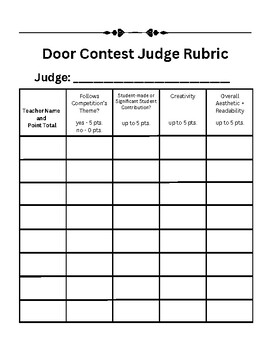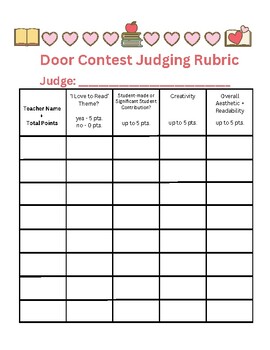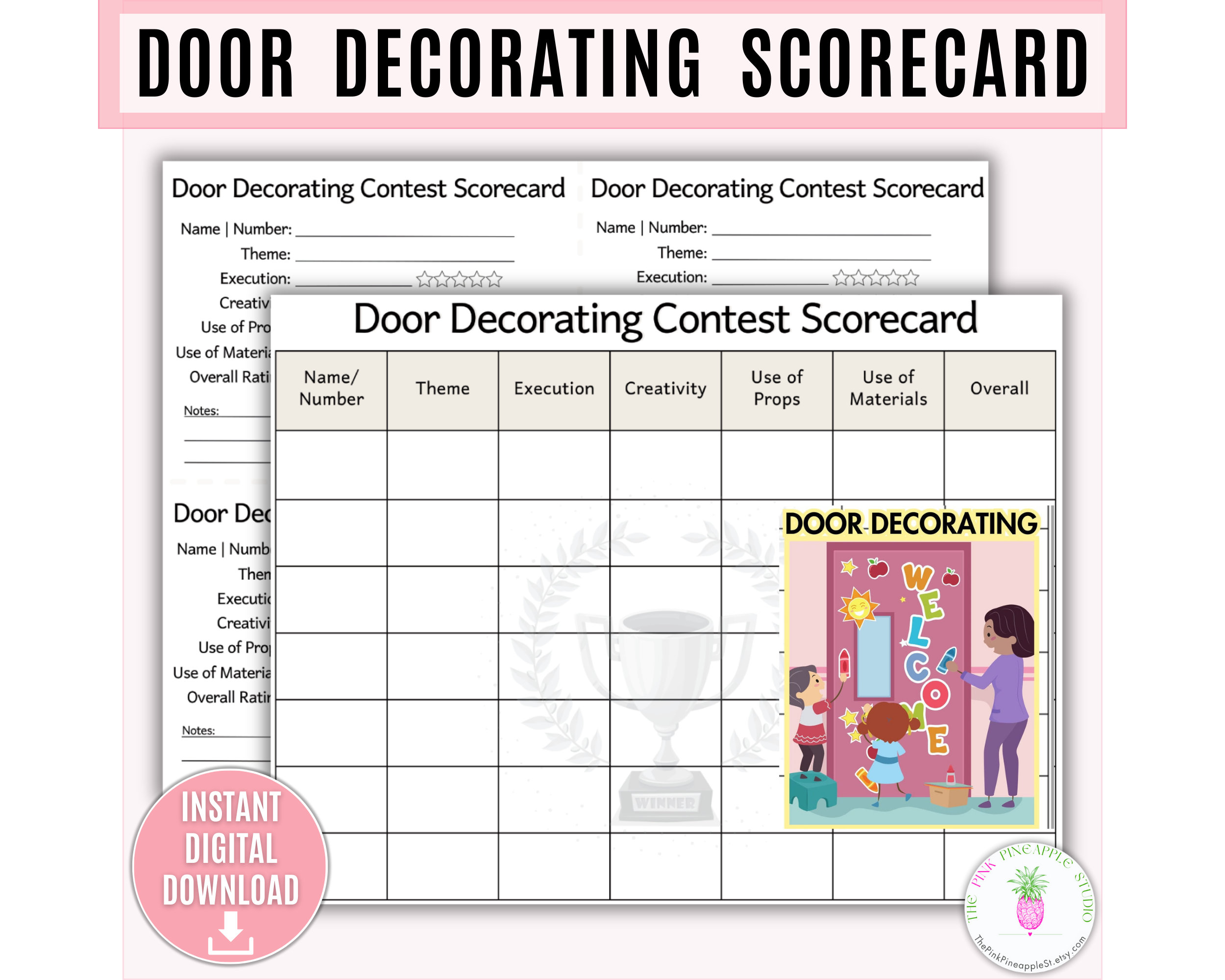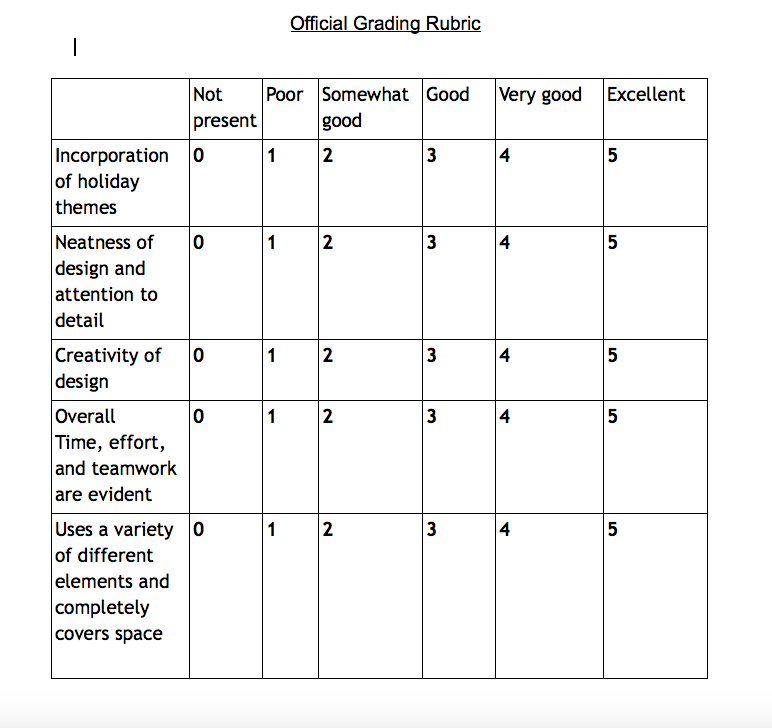Door decorating contests are a fantastic way to foster creativity and community spirit. Whether you’re organizing a competition at your school, workplace, or community center, having a clear and comprehensive rubric is essential for fair judging and to encourage participants to showcase their talents. In my years of experience organizing such events, I’ve seen how the right rubric can transform a simple contest into an engaging and memorable experience for everyone involved. In this article, we’ll delve into creating an effective door decorating contest rubric, share personal insights, and provide tips to enhance your event!
Understanding a Door Decorating Contest
Before we dive into the specifics of the rubric, let’s understand what a door decorating contest entails. Participants decorate doors based on a theme, often leading to a vibrant display of creativity and personal expression. Themes can vary from holiday decorations to school spirit or even artistic interpretations of literature or current events.
Why Have a Contest?
- Encourages creativity and teamwork
- Enhances community spirit
- Provides a fun and engaging environment
- Recognizes and rewards talent

Key Components of a Door Decorating Contest
- Themes: Select a theme that resonates with participants.
- Rules: Clearly outline rules regarding materials, size limitations, and safety considerations.
- Judging Criteria: Establish an unbiased rubric for evaluating entries.
- Prizes: Offer awards that motivate participants, whether they be trophies, certificates, or fun goodies.

Creating a Door Decorating Contest Rubric
Now, let’s break down the essential elements of a door decorating contest rubric. A well-structured rubric not only sets clear expectations for participants but also aids judges in providing unbiased evaluations.

Essential Criteria for the Rubric
- Creativity and Originality: Is the design unique and imaginative?
- Theme Relevance: How well does the decoration fit the assigned theme?
- Overall Aesthetic: Is the door visually appealing and well-organized?
- Use of Materials: Were materials used effectively and innovatively?
- Effort and Teamwork: Does the project reflect effort and collaborative teamwork?

Sample Door Decorating Contest Rubric
| Criteria | Excellent (5 points) | Good (4 points) | Fair (3 points) | Poor (1-2 points) |
|---|---|---|---|---|
| Creativity and Originality | Highly innovative and unique design | Some originality, but elements are familiar | Limited creativity; minimal new ideas | Little to no creativity; copied design |
| Themes Relevance | Perfectly aligns with the theme | Mostly fits the theme | Somewhat relevant to the theme | Poorly aligned or off-theme |
| Overall Aesthetic | Extremely visually appealing and professional | Good visual appeal with minor flaws | Aesthetic is average; could be improved | Not visually appealing; lacks organization |
| Use of Materials | Materials are used exceptionally well | Good material use with minor issues | Fairly average use of materials | Poor use of materials; lacks innovation |
| Effort and Teamwork | Shows exceptional effort and evidence of teamwork | Good effort and some teamwork | Limited collaboration; minimal effort shown | Lacks effort; little to no teamwork |

Scoring Guide
Scores can be tallied for a maximum of 25 points. A score of:

- 21-25: Outstanding
- 16-20: Good
- 11-15: Needs Improvement
- Below 11: Unsatisfactory
Personal Tips for Hosting a Successful Door Decorating Contest
Having organized several door decorating contests in the past, I’ve amassed a collection of tips to help ensure your event runs smoothly. Here’s a compilation of what I’ve learned along the way!
Choosing the Right Theme
The theme sets the tone for your contest. Select one that allows participants to express their creativity and aligns with the occasion. Some popular themes include:
- Seasonal Themes (Fall, Winter, Spring, Summer)
- Literary Characters
- Movies or TV Shows
- Community Spirit
Engaging Participants
To boost participation, consider hosting a kick-off meeting where you explain the contest rules and inspire participants with ideas. Create a buzz through social media channels, organization newsletters, or community bulletins.
Prizes and Recognition
Offering appealing prizes can motivate participants. Consider categories such as:
- Best Overall
- Most Creative
- Best Theme Representation
- Best Use of Materials
Judging Panel
Assemble a diverse judging panel to ensure a fair evaluation process. Include teachers, community leaders, or even past contest winners for a range of perspectives.
Pros and Cons of Hosting a Door Decorating Contest
Pros
- Builds community and camaraderie
- Showcases artistic talent
- Encourages teamwork and collaboration
- Provides a fun outlet for creativity
Cons
- Requires time and effort to organize
- May involve costs for materials and prizes
- Potential for disagreements during judging
Additional Resources for Door Decorating Contests
To further enrich your understanding and execution of a door decorating contest, consider these resources:
- Pinterest – An excellent source for decoration ideas.
- Better Homes and Gardens – Creative tips and inspiration.
- Eventbrite – Organizing successful events.
FAQs on Door Decorating Contests
What materials can we use for decorating doors?
Participants can use a variety of materials such as paper, fabric, markers, paint, and other craft supplies. Ensure that all materials are safe and easy to clean up after the contest.
How do we ensure fairness in judging?
Using a well-defined rubric is the best way to ensure fair evaluations. Additionally, having a diverse judging panel can help minimize biases.
Can we incorporate a charity aspect into the contest?
Absolutely! Many organizations choose to collect donations for local charities as part of their contest. This adds an altruistic element, encouraging more community involvement.
What if participants disagree with the judges’ decisions?
Clearly communicate the judging criteria and reasoning behind the scores when announcing winners to mitigate any disputes.
Is it possible to have virtual door decorating contests?
Yes! With advancements in technology, participants can decorate their doors at home and submit photos for judging. This expands your pool of participants and makes it accessible to anyone.
Conclusion
A door decorating contest can be a unique and enjoyable event that connects your community and highlights creativity. By establishing a clear rubric and engaging participants, you can host a successful contest that will leave a lasting impression. I hope this guide serves you well as you embark on this exciting journey. Remember, the most important aspect is to have fun and celebrate the talent in your community!